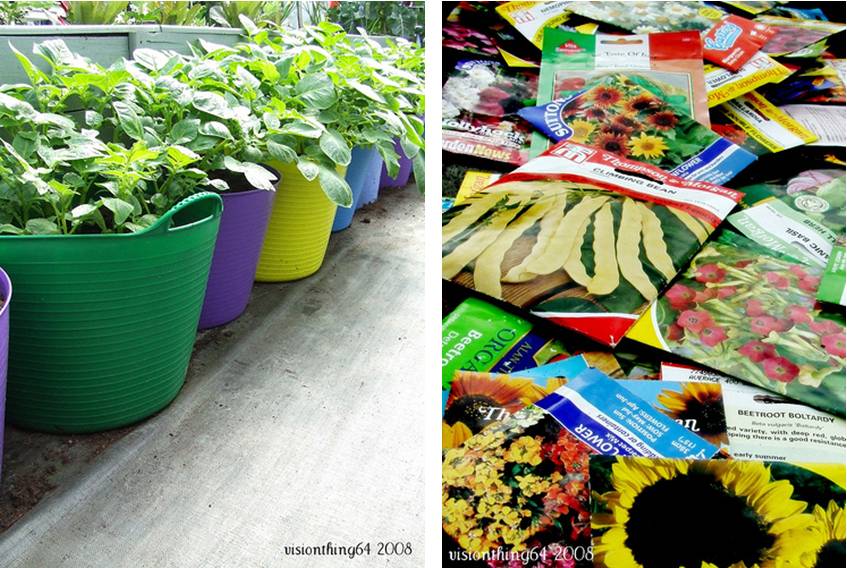Community gardening is an exhilarating pastime, and one we’re very excited about here at Fennel and Fern. It’s becoming more and more popular as increasing numbers of people who don’t own gardens find other route of getting into gardening. It’s a fantastic idea.
Which is why we were so thrilled when Jill Coleman agreed to write a monthly blog for us about her community garden in Warrington. Jill works at the New Routes Community Garden, Victoria Park, where adults with learning disabilities and disaffected young people have been cultivating the land for just over three years.
The project is managed by MacIntyre, the Warrington Youth Service, with co-ordination provided by Groundworks Mersey Valley.
The 6 acre site was derelict when the community garden was set up.
“No-one visited this area of the park, save to dump rubbish on it,” says Jill. “When we took over, there was no option but to bring in the diggers to scrape off the surface.
“Once the diggers had finished, it took a lot of stone picking and raking before we could start to set out the orchard, raised beds and planted areas.”
One of the biggest concerns when planning the garden was to ensure that it was accessible to all involved in the project. The nature of many of the disabilities Jill works with means that wide pathways and no steps were essential. Raised beds, often painted in bright colours to assist those with visual problems, are also a key feature.
To date, the garden consists of a polytunnel, two areas of raised beds, a large vegetable patch, a butterfly garden, strawberry planter, herb wheel, orchard, wildflower meadow and a daffodil maze.
What’s your recipe for good compost?
Not having a big wasps’ nest slap bang in the middle of it! Sadly, that’s what’s happened to our old heap, which means that we won’t be able to use what we have so far once the pest control guys have done their bit.
We compost as much as we can, and try to have a good mix of all sorts – old compost, rejected plants, kitchen waste, shredded paper and cardboard. We’re hoping to get chickens next year, so chicken manure will be going on the heap as well. Weeds are a big no-no, as is anything that we suspect to be diseased.
Hopefully by the end of next week we’ll have a lovely new compost bay and we can start all over again.
Tell us why community gardening works.
It gives people a real sense of contributing to their society, even if they are only able to commit to a tiny amount. The sense of teamwork is wonderful. The best days have been when a big group has been working on tree planting or setting in the raised beds.
One of the drawbacks is security. The site is on publically owned land and is quite isolated. The gates are locked at night, but people are still able to get in. So far we have suffered only one serious episode of vandalism when the polytunnel was slashed open, and we have had a wheelbarrow stolen. The allotment site next door seems to suffer far more negative attention than we do.
Look out for Jill’s posts over the next few months and learn more about why community gardening is something we all need to look out for.
What organic fertilizers or pesticides do you use?
We don’t use many pesticides, just an organic spray occasionally. We prefer to encourage natural predators by constructing habitats and planting attractors. Companion planting is always a favourite technique, as is crop rotation. We protect our plants where we can – netted frames for the brassicas, cold frames and now fleece for the carrots.
A favourite fertilizer has to be organic chicken manure pellets. The workers aren’t keen – every time the tub appears the complaints about the smell start! Still, the results speak for themselves.
How would you describe your approach to gardening?
I think the thing that my colleagues and I say to each other the most is “Let’s give it a go”. We’ll always have a bit of a go and an experiment, and if it doesn’t work, it doesn’t matter. For instance, this year we’ve been growing some sweet potatoes from some tubers that I bought in Tescos then forgot about. When I discovered that they had started to sprout, there was only one thing for it – take them to work and stick them in tubs in the polytunnel So far the results are looking promising …
To get to know Jill and the New Routes community garden a little better, we fired some questions at her:
Biggest garden pest? How do you deal with it?
Without a doubt, slugs. They are everywhere, and they are so hard to control organically. They particularly love the humid conditions inside the polytunnel where they can wreak havoc among the seedlings. We try to protect the plants as much as possible, and we have attempted to make the coldframes as slug-proof as we can. We’ve have found coffee grounds to be quite effective and fortunately there is a branch of Starbucks just down the road! Next year when the growing areas are finally established, we’re going to give nematodes a try.



Leave a Reply